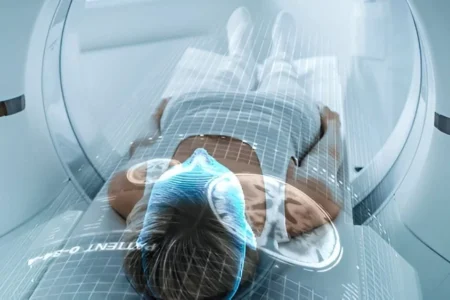Invasive Breast Cancer
- Updated on: Jul 29, 2024
- 4 min Read
- Published on Nov 19, 2020

Invasive Breast Cancer
Invasive breast cancer is supposed to be no special type of cancer. It is “the most common cancer” among women. A study estimated that in the US, 1 in about every 7 women have invasive breast cancer.
Invasive breast cancer extends from the lining of the milk ducts to the surrounding tissues of the breast, the nearby lymph nodes, and even farther locations. Breast cancer starts from the infected cells present within the milk ducts or lobules. These cells bulge out into the surrounding breast tissues and develop into tumors. These cells also travel to distant parts of the body through the bloodstream or the lymphatic system.
Breast cancers can sometimes be non-invasive also. Non-invasive breast cancers spread within the milk ducts or lobules in the breast and do not develop into or invade normal tissues within or beyond the breast. Therefore, sometimes, non-invasive cancers are also termed as carcinoma in-situ (meaning “in the same place” or pre-cancers).
What is Breast Cancer (Female)?
Invasive Breast Cancer Symptoms
Symptoms of invasive breast cancer are described below:
- A lump or mass or thickening in or near the breast or in the underarm (during and after menstrual cycle).
- Swelling of the breast and its parts.
- Changes might be felt in the size, shape, or contour of the breast.
- Discharge(blood-stained or clear fluid) from the nipple.
- Pain in breast or nipple.
- Skin irritation or dimpling.
- Nipple retraction (turning inward).
- Redness of the skin on the nipple or breast.
- A marble-like hardened area under the skin.
- Red, scaly, or thickened nipple or breast skin.
- Swelling in the underarm lymph nodes.
Types of Invasive Breast Cancers
Two types of Invasive breast cancers are most prominent:
Invasive Lobular Carcinoma (ILC)
Invasive lobular carcinoma (ILC) is found in about 7 to 10% of invasive breast cancer cases. Invasive lobular carcinoma begins in the lobules or milk glands and starts spreading to the lymph nodes and other body areas. In comparison to other cancers, there are chances of ILC to be found in both breasts.
Another name for invasive lobular carcinoma is infiltrating lobular carcinoma. A woman feels a little thickening instead of a lump in the breast if she has infiltrating lobular carcinoma.
Invasive Ductal Carcinoma (IDC)
Invasive ductal carcinoma or infiltrating ductal carcinoma is the most common type of invasive breast cancer covering about 85% of all cases of breast cancer.
Cancer cells develop in the lining of milk ducts (milk ducts are thin tubes which take milk from the breast to the nipple) and ooze out through the surrounding walls and then invade breast tissues. These cancerous cells can stay localized at their originating position or may metastasize to distant organs in the body.
Read About Breast Self Exam (BSE)
Invasive Ductal Carcinoma Stages
The staging of particular cancer depends on the following factors:
- Size of the tumor inside the breast
- Number of lymph nodes affected by it
- The lymph nodes present in the underarm area (the axillary region) are the first place where the breast cancer firsts metastasize
- Symptoms of breast cancer when it has spread to distant organs within the body
- If metastasis has occurred, evidence may be found in the bones, liver, lungs, or brain.
For Invasive ductal carcinoma stages, a numeric scale ranging from 1 (earliest stage) to 4 (advanced stage) is used. Stages for invasive ductal carcinoma are:
Stage 1 Invasive Ductal Carcinoma: The tumor is very small, less than 2 centimeters in diameter. The cancer is not supposed to metastasize beyond the breast.
Stage 2 Invasive Ductal Carcinoma: The tumor enlarges in stage 2. The size increases from 2 to 4 centimeters in diameter, and there are chances that the cancerous cells might have spread to the lymph nodes in the underarm area.
Stage 3 Invasive Ductal Carcinoma: Although the invasive ductal carcinoma stage3 is extensive, it is limited to the breast, lymph nodes, and surrounding tissues
Stage 4 Invasive Ductal Carcinoma: Invasive ductal carcinoma stage 4 is the most severe when the breast cancer spreads to the lymph nodes or reaches beyond the underarm area to distant sites, including the lungs, liver, bones, or brain.
Grades of Invasive Ductal Carcinoma
After the confirmation that a person is suffering from infiltrating ductal carcinoma, grade assessment is done based on the quantitative measures and the size and shape of nuclei. Grades define the “aggressive potential” of the tumor and are useful during the treatment of invasive ductal carcinoma. Low grade invasive ductal carcinoma is supposed to be less potent than high grade invasive ductal carcinoma.
A ‘score’ is assigned based on the nuclear assessment (size within the invasive cells), a mitotic index assessment (evident patterns of cell division), and a tubular assessment (calculated amount of cell groupings that stay in normal ‘tubular’ shape).
Invasive Ductal Carcinoma Grade 1: The prognosis is favorable in this grade. The glands are small and angulated with fairly uniform nuclei.
Invasive Ductal Carcinoma Grade 2: Tubular gland structures are formed (with glands) with nests of cells that contain moderately atypical nuclei. Grade 2 Invasive Ductal Carcinoma has an intermediate prognosis.
Invasive Ductal Carcinoma Grade 3: Grade 3 invasive ductal carcinomas behave more aggressively and have a very poor prognosis. Grade 3 invasive ductal carcinoma consists of layers of individual and nests cells with abnormal appearance of cell nuclei and mitotic activity.
Invasive Ductal Carcinoma Treatment
The treatments for invasive ductal carcinoma are divided into two categories:
Local Treatments: Local treatments involve surgery and radiation therapy, targeting and treating the tumor in the breast and surrounding areas, such as the chest and lymph nodes.
Systemic Treatments: Systemic treatments involve chemotherapy, hormonal therapy, targeted therapies that destroy any cells that have spread from the original tumor. Systemic treatments for IDC are very effective at reducing the risk of the recurrence of cancer.
Invasive ductal carcinoma can be found in women of any age, but it was estimated that about 65% of the women diagnosed were above 50 years. Invasive breast cancer can also affect men in rare cases.
The treatments can be effective, but it depends on breast cancer type, duration of spread, and area of metastasis.












